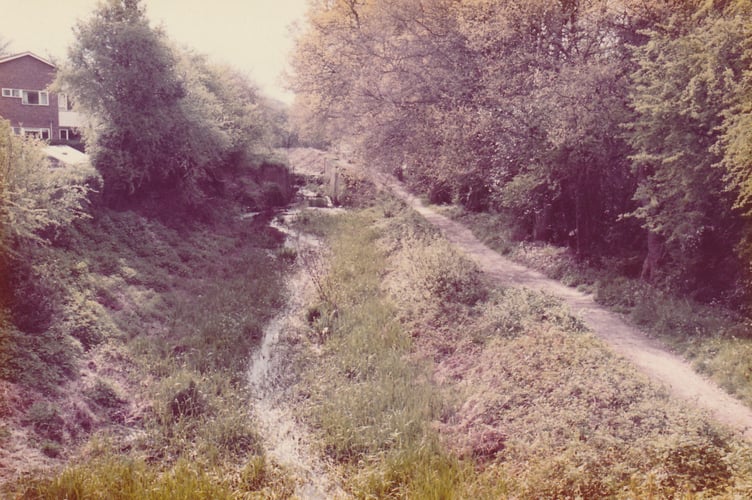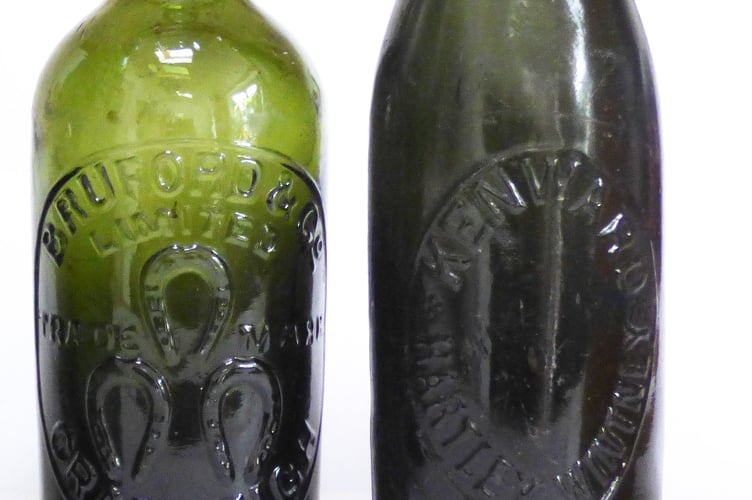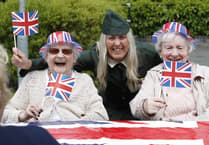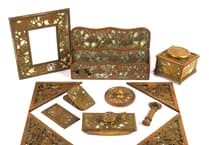The reconstruction of locks was an extremely important job when the Basingstoke Canal in the Woking area was being restored.
This week we continue with the second in this series looking at the canal’s restoration in the mid to late 1980s as volunteer work parties got stuck in and dredging the waterway unearthed scores of old bottles.
As mentioned before, Ken and Denise Halls, and their two daughters, were among the volunteers, and Ken has kindly given me a number of bottles they found. He has also supplied details of the work being undertaken featured in photographs taken by the late Tony Dorman.
The below picture is a view of Lock 10 at St John’s and shows just how overgrown the canal was.

Ken says: “The photos show where some of the bottles were found, and unfortunately some of the bigger pots were broken by the large mechanical digger.
“We officially opened the St John’s flight of locks on the 16th of April 1989.”
The bottles that came up out of the mud and silt all have their own stories to tell.
The two shown here are half-pint beer bottles. Both are a long way from home.

The one on the left is embossed with three horseshoes and the words “BRUFORD & CO LIMITED TRADE MARK CRANLEIGH”.
This brewery was established by George Bruford in 1873. He was born in Somerset in 1837, and came to Cranleigh in 1867 where he rented a farm.
In 1877 he transferred his brewery business to the newly-built Cranleigh Steam Brewery at the east end of the High Street.
The adjacent brewery tap was named the Three Horseshoes beer house (it was not licensed to sell spirits).
On the 1881 census Bruford was listed as farming and brewing, employing six men and one boy on the farm, and five men at the brewery.
The reference to steam in the brewery name meant that it had a small stationary steam engine to drive the pumps and hoists.
Bruford & Co became a limited company in 1888, but George sold his interest in the brewery in 1891, left Cranleigh, and died in 1903. It’s not known who ran the brewery after 1891, but it was taken over by Savill’s Brewery of Shalford, near Guildford, in 1901, and continued under Bruford’s name.
Savill’s must have been after the eight tied houses (pubs) owned by Bruford & Co, as Savill’s closed the Cranleigh brewery in 1912.
The Bruford’s beer bottle found in the canal is an early example of a bottle having a crown cork top, invented in the US by William Painter in 1896. The metal cap had a cork seal inside (plastic today), and its name came about as the top was said to “crown the bottle beautifully”.
The design was slow to take off in the UK and I estimate the bottle dated from a year or two before the brewery closed.
The other bottle is from a brewery in east Hampshire. It is embossed KENWARD HARTLEY WINTNEY. Nearby are Odiham and Crondall, both well known for once growing hops and not far from two towns once famous for brewing beer, Farnham and Alton.
However, Hartley Wintney was once an important place for brewing too. A brewery had already been in existence when in 1836 William Cave bought it and over the next 40 years built it up with some 60 outlets.
After Cave’s death in 1876, Thomas Kenward purchased the brewery and its pubs for £50,225 (roughly nore than £3.3 million today).
By 1905 a new bottling plant was being built, but on October 20 that year a fire swept through the brewery causing £3,000 worth of damage, destroying the malthouse, a house and the new bottling stores.
Kenward had his brewery rebuilt and remained in charge until he died in 1916, aged 93. It’s believed brewing ceased in 1921, when Guildford’s large Friary, Holroyd & Healy’s Brewery bought the Kenward Brewery and its 41 licensed houses.
Without doubt, Friary was after Kenward’s pubs as it had done in the 1890s when it had bought Holroyd’s Brewery at Byfleet and Healy’s Brewery in Chertsey, and then closed both pf them.
Friary did the same with Kenward’s, keeping the best pubs and selling off 20 others.
With Hartley Wintney being just a few miles north of the Basingstoke Canal and the Kenward Brewery having pubs all around that area of east Hampshire, I wonder whether this bottle, which dates to about the late 1890s-1900s) was bought by a bargeman and who drank the contents while passing through St John’s and then simply tossed the bottle into the canal.

.jpeg?width=209&height=140&crop=209:145,smart&quality=75)



Comments
This article has no comments yet. Be the first to leave a comment.